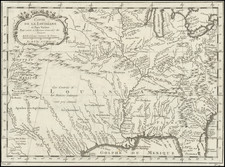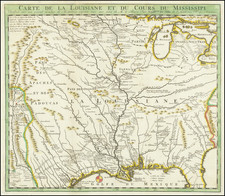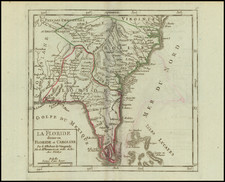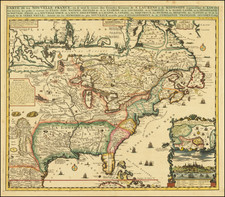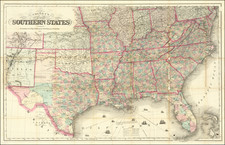This example of Colton's map of Eastern Tennessee is a fascinating source document, annotated by Geologist Bailey Willis in conjunction with his extensive study of the Iron Ore deposits in Eastern Tennessee for the US Geological Survey.
The map includes manuscript notes showing the locations "where one or more iron ore samples were taken" (with a big red X) , reflecting his field notes on the iron ore samples in Eastern Tennessee. It is virtally beyond question that this Eastern Sheet was sold separately and used by Department of the Interior Geologist Bailey Willis (B. Willis noted on the map covers) in conjunction with his extensive body of work on the iron ore deposits in Eastern Tennessee for the United States Geological Survey. A significant portion of Willis' early career focused on the study of iron ore deposits in Eastern Tennessee, including Willis's Notes On The Samples Of Iron Ore Collected In East Tennessee in the Department of the Interior's 1886 Report Of The Mining Industries Of The United States (Exclusive Of The Precious Metals), With Special Investigations Into The Iron Resources Of The Republic . . . and his Mechanics of Appalachian Structure . . . published by the Department of the Interior US Geological Survey. The Resources of Tennessee By Tennessee State Geological Survey, Tennessee Division of Geology. . . (p.154), in the Census Report for 1880 also notes that Willis prepared an analysis of samples of iron ore from Sevier and Carter Counties. These are two of the counties with manuscript annotations in the present map.
Bailey Willis (1857-1949) was the son of poet and publisher Nathaniel Parker Willis. His career included extensive work with the US Geological Survey, Department of the Interior and as Survey Geologist for the Northern Pacific Railroad. He lectured at Johns Hopkins University from 1895 to 1902, was the head of the Division of Areal Geology for the USGS and was awarded a gold medal from the Societe Geographique de Farance in 1910. From 1910 to 1914 he consulted for the Government of Argentina. I nthe 1920s, he was a major campaigner for increased public awareness on the risk of earthquakes, completing his career as professor and chairman of the Geology Department at Stanford University. He was elected to the National Academy of Sciences in 1920 and served as President of the Seismological Society of America from 1921 to 1926. In 1944, he received the Geological Society of America's Penrose Medal.
A remarkable source document and artifact of one of America's most notable Geologists of the late 18th and early 19th Century, whose prolific career as a geologist lasted nearly 70 years.
G. W. & C. B. Colton was a prominent family firm of mapmakers who were leaders in the American map trade in the nineteenth century. The business was founded by Joseph Hutchins Colton (1800-1893) who bought copyrights to existing maps and oversaw their production. By the 1850s, their output had expanded to include original maps, guidebooks, atlases, and railroad maps. Joseph was succeeded by his sons, George Woolworth (1827-1901) and Charles B. Colton (1831-1916). The firm was renamed G. W. & C. B. Colton as a result. George is thought responsible for their best-known work, the General Atlas, originally published under that title in 1857. In 1898, the brothers merged their business and the firm became Colton, Ohman, & Co., which operated until 1901, when August R. Ohman took on the business alone and dropped the Colton name.









